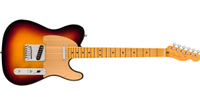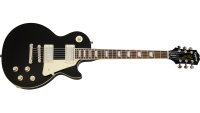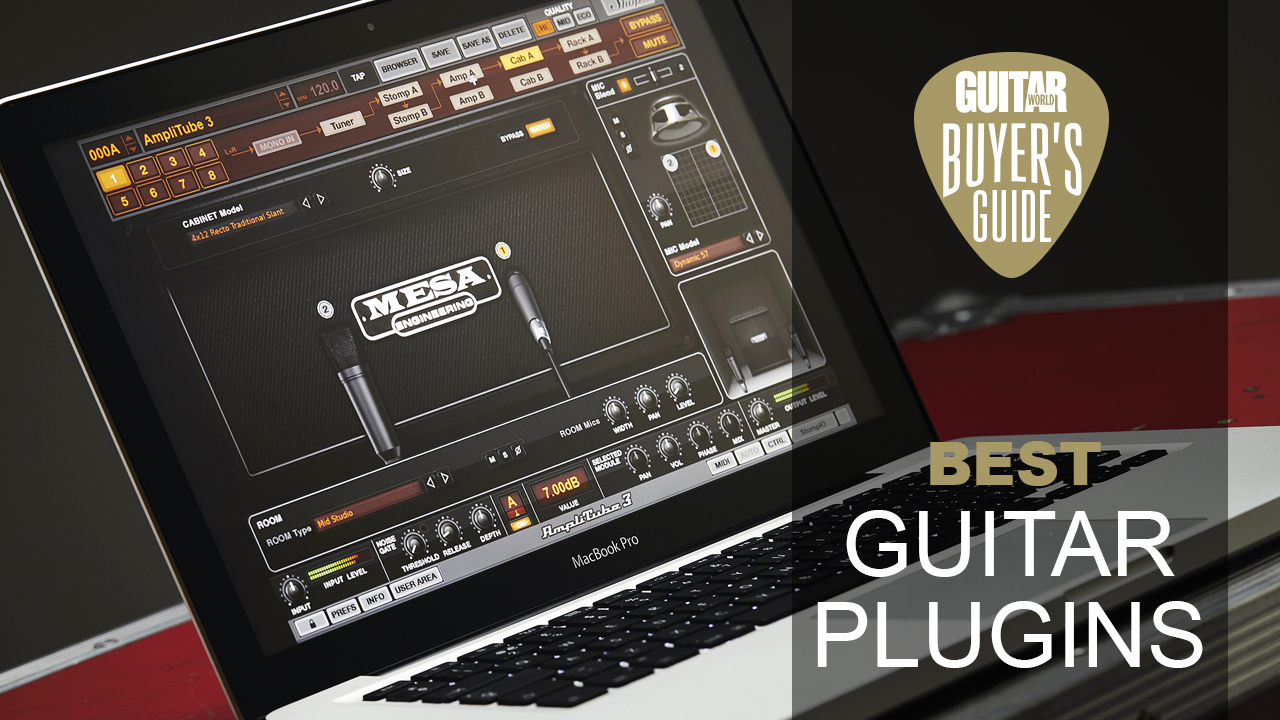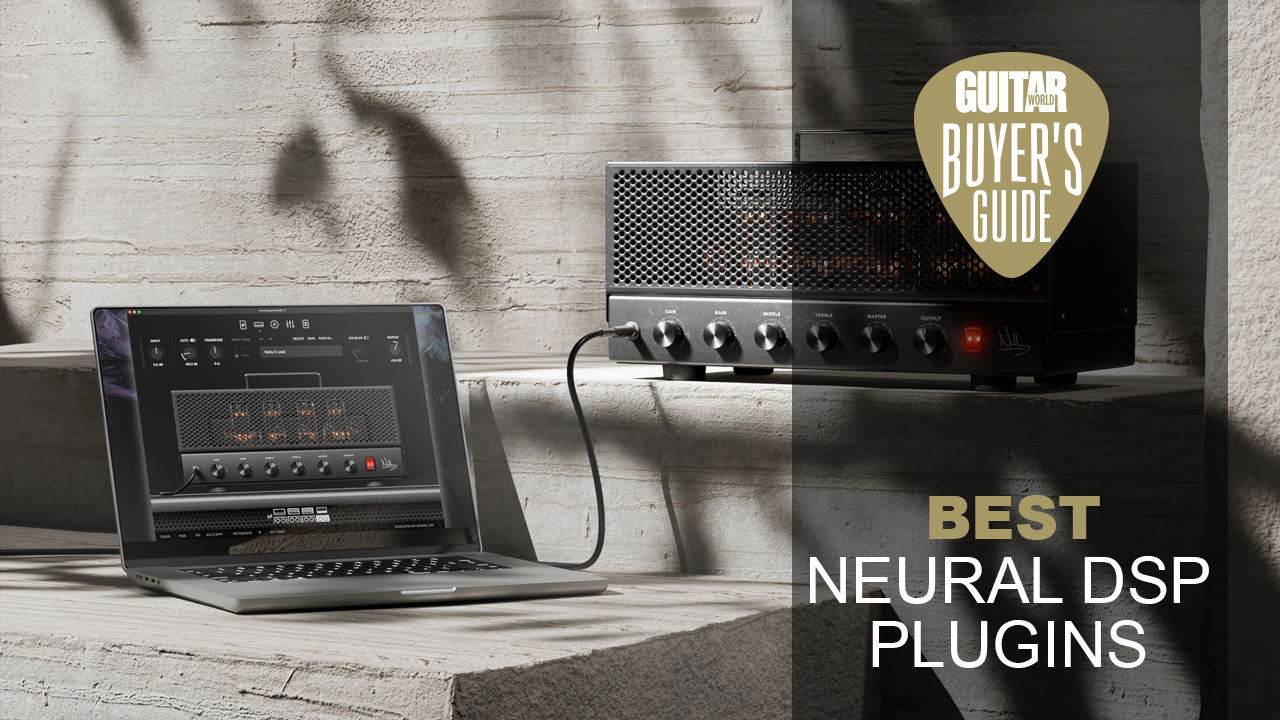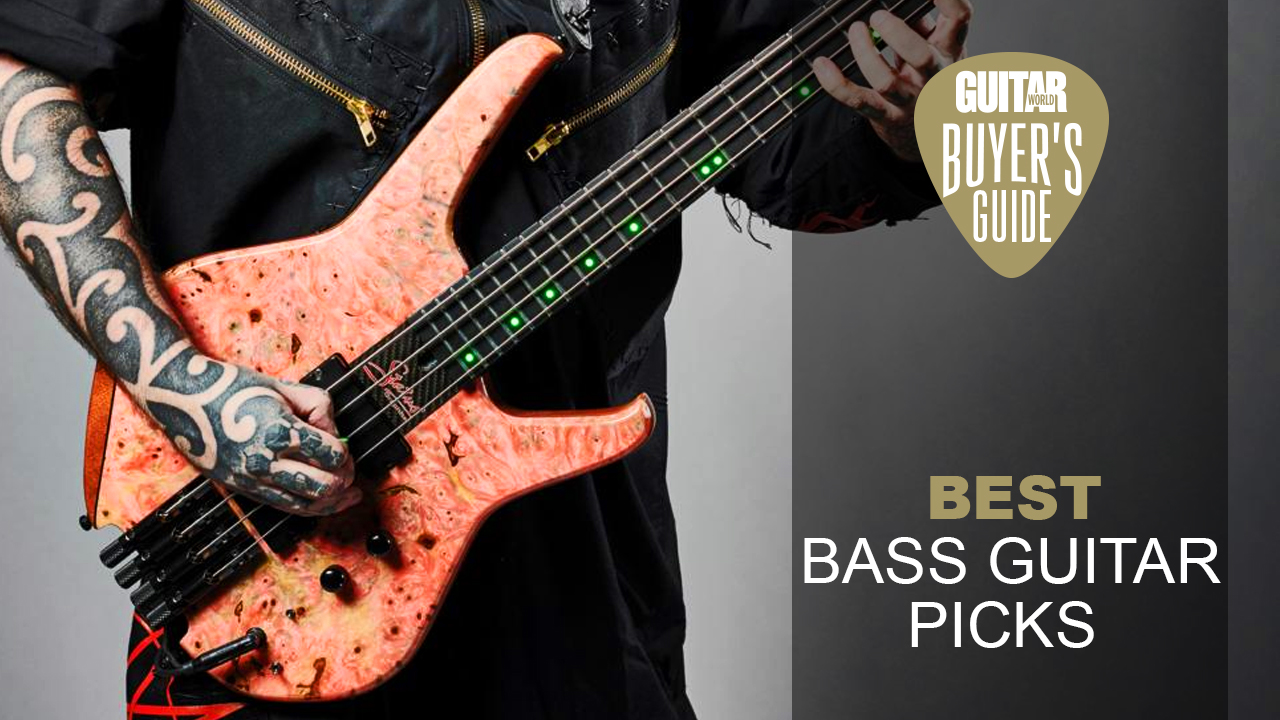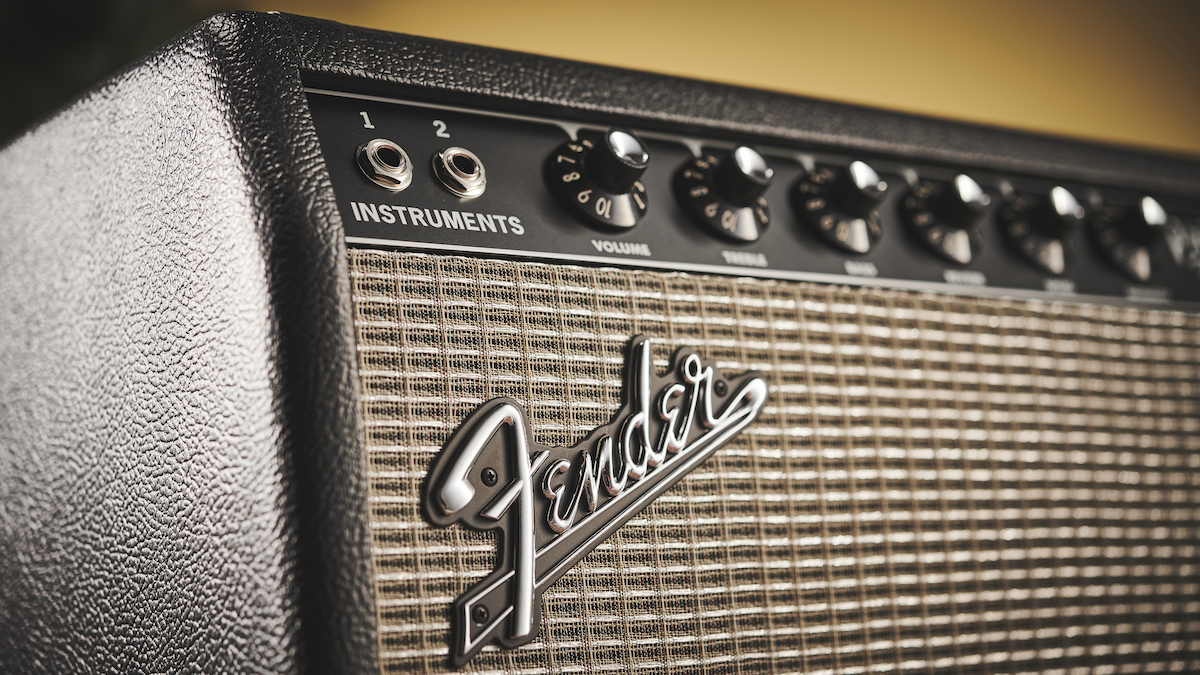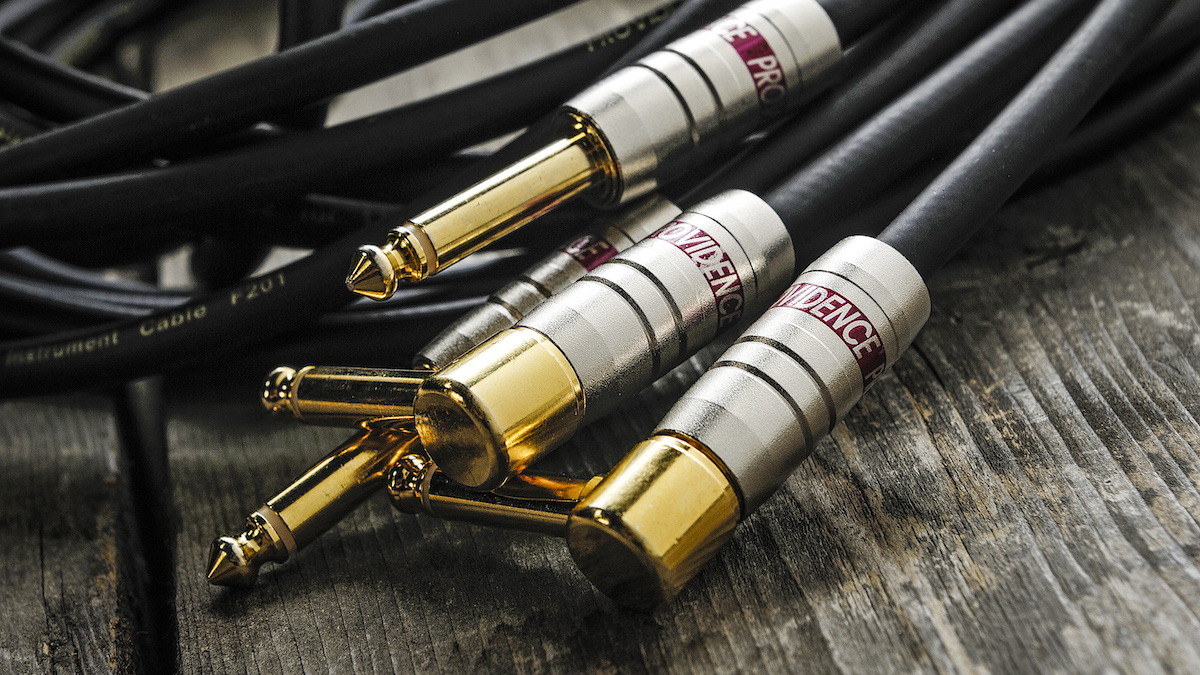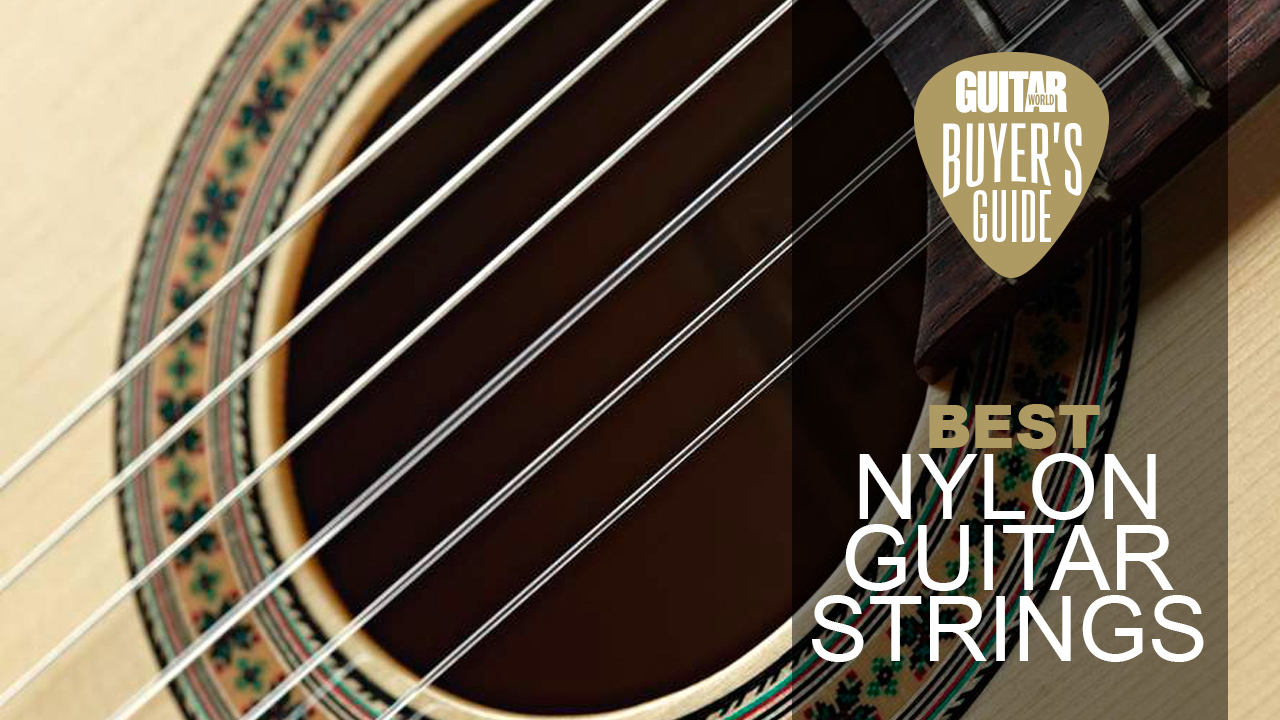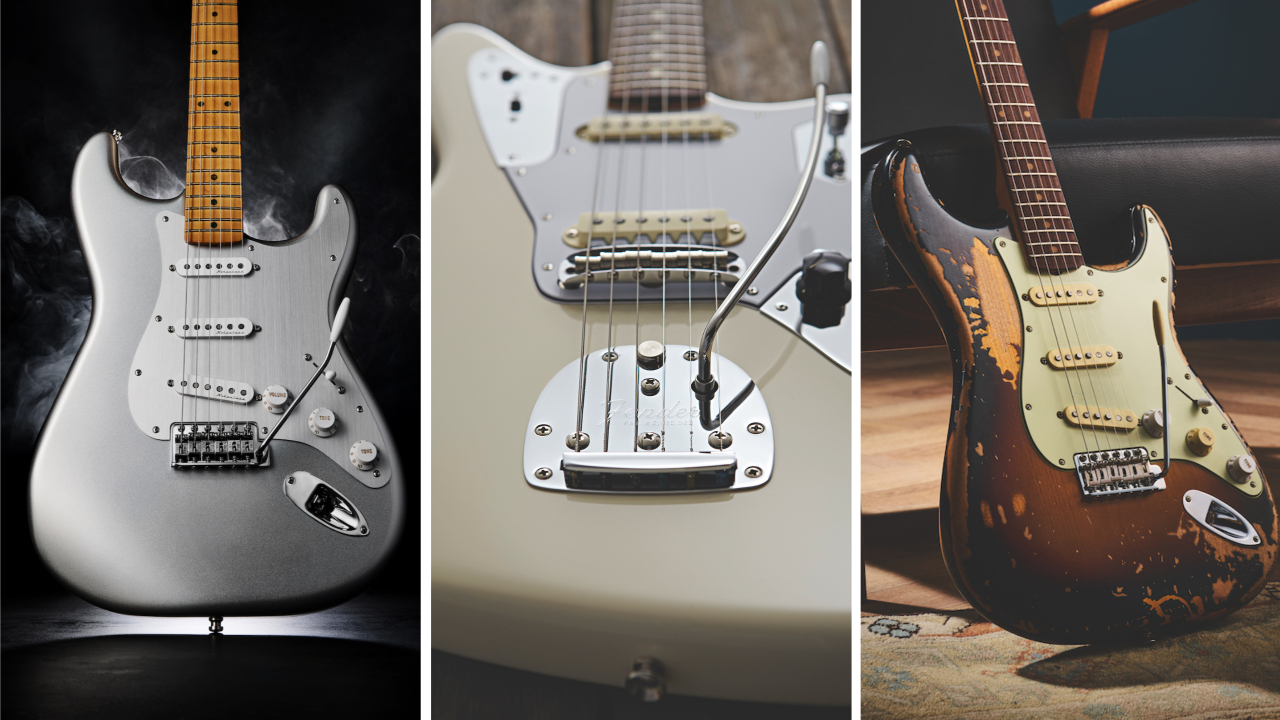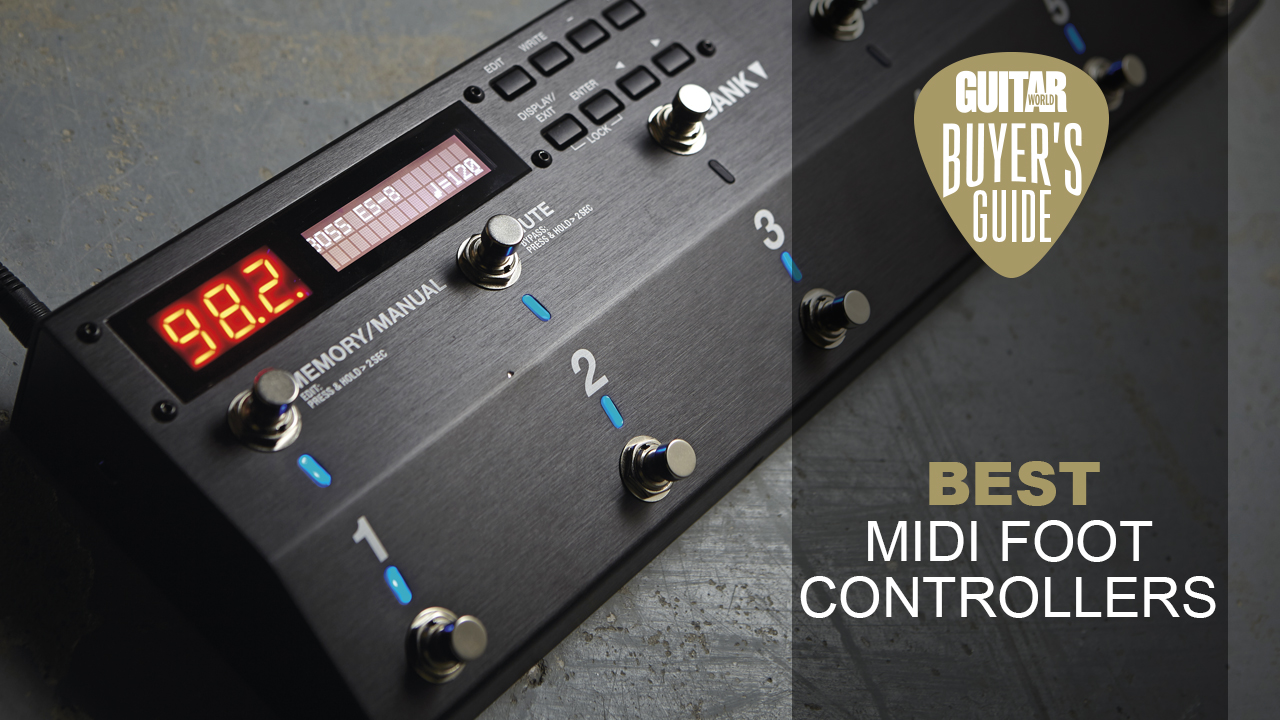Best electric guitars 2025: our top picks for every playing style, ability and budget
Useful buying advice and our expert pick of the best electric guitars for newcomers to pro players
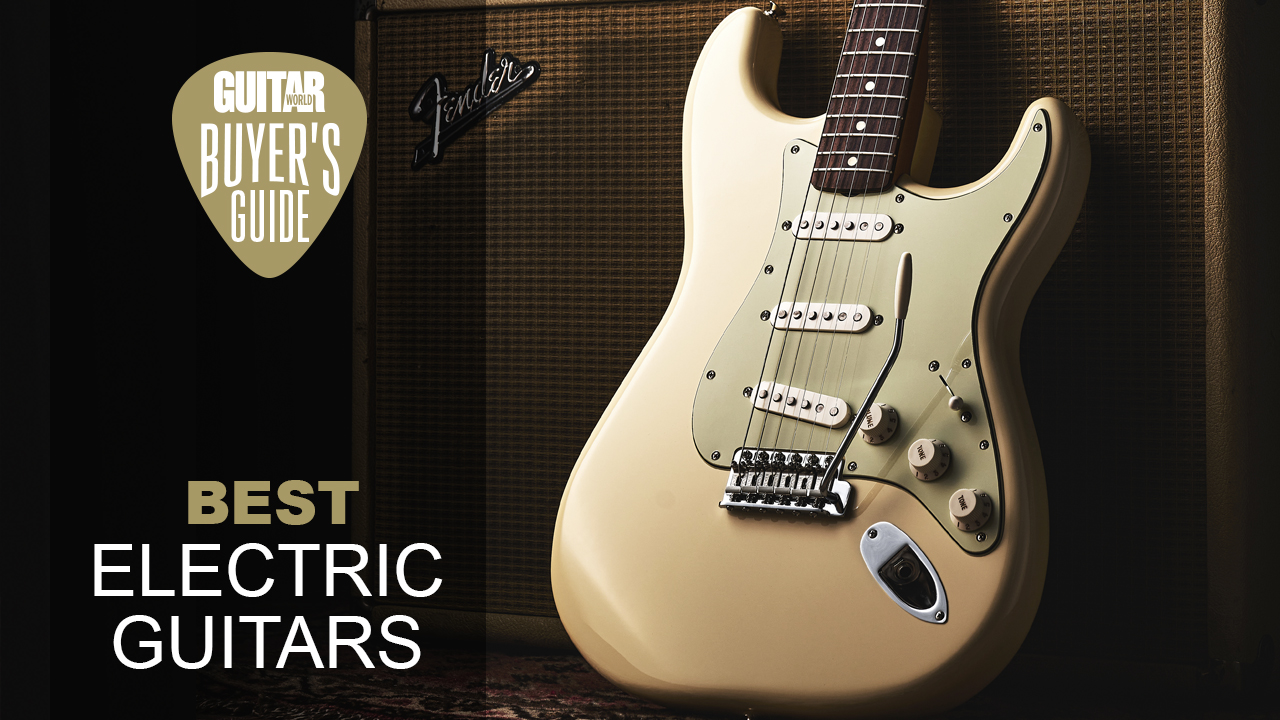
Is there really such thing as the best electric guitar? Well a quick scour of the internet will show you that everyone and their dog has an opinion on the matter, and you know what they say about opinions... Here at Guitar World though, our opinion carries more weight than most, as our team has collectively reviewed literally thousands of guitars over more than 30 years of testing, gigging, recording, and endless practicing.
The truth? There is no best electric guitar, only a best guitar for your specific needs. So, to help assist a range of guitar players in finding their perfect match, we've set out this all-encompassing guide to cover all the bases and then some. You'll find guitars spanning the gamut from beginner to seasoned pro here, and plenty in between that should get you your perfect match.
In this guide you'll find our top picks below, but if you need more help you can check out our FAQs section for more knowledge, or examine each model side-by-side with our spec comparison table. Each entry features an expert verdict from a member of our reviews team (bar one entry and we're working on that) as well as a link to the full review so you can dive deeper into your favorites.
Our top picks
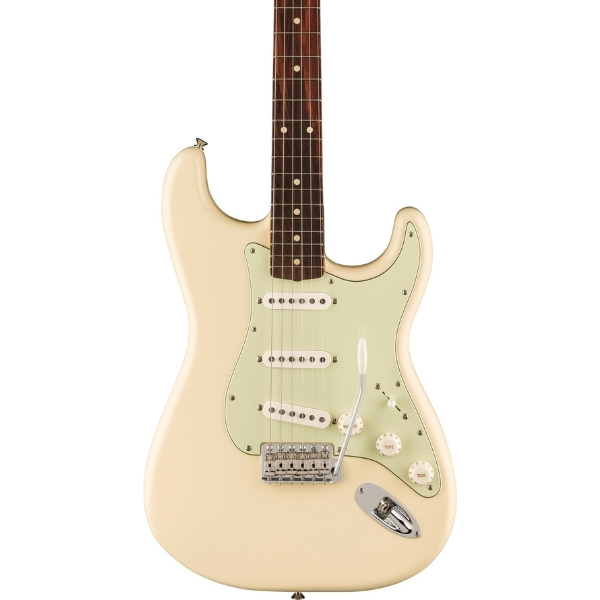
A brilliant guitar that combines playability, epic tones, and value for money in one neat and tidy package, the Fender Vintera II Stratocaster is a fantastic instrument that will suit a wide variety of players and playing styles.
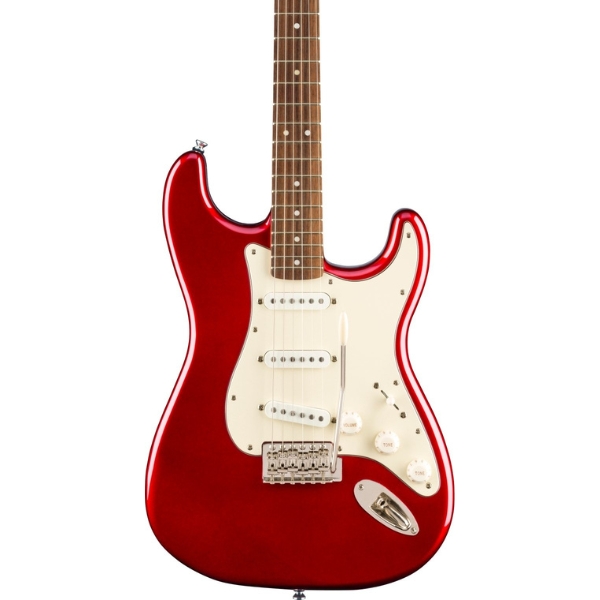
The Squier Classic Vibe 60s Stratocaster is our top choice for beginners. Featuring a comfortable 'C' profile neck that's the perfect balance to start on, it packs some superb Strat-style tones into a great value for money package.
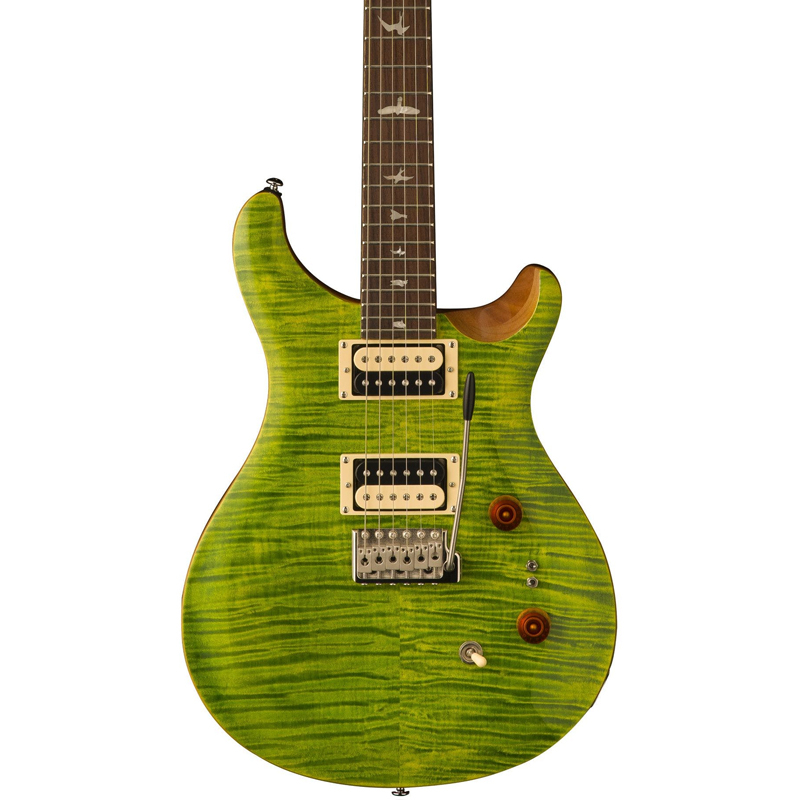
It's no secret that we love the PRS SE Custom 24 here at Guitar World. The Wide Thin neck profile strikes a neat balance between comfort and speed, while the coil-tap pickups ensure you have every tone possible at your disposal.
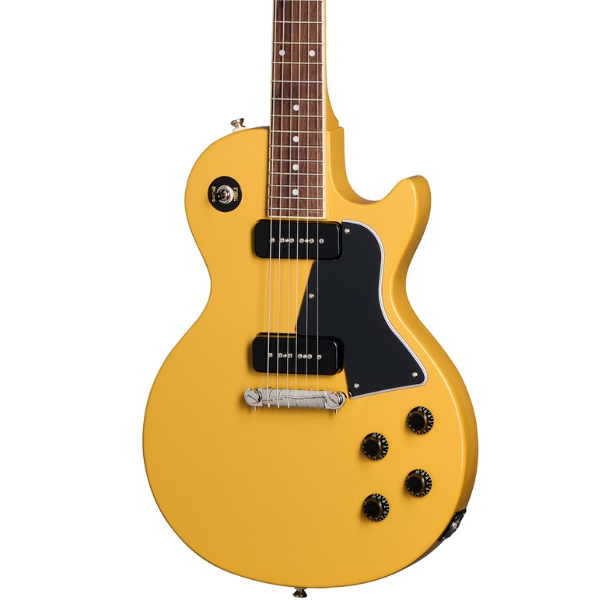
Here at Guitar World, we absolutely adore the sound of a P-90 pickup. There's something about the gritty growl and shimmering highs that sets our hearts racing. So, it's only natural that we'd include a P-90-loaded guitar in our guide to the best electric guitars.
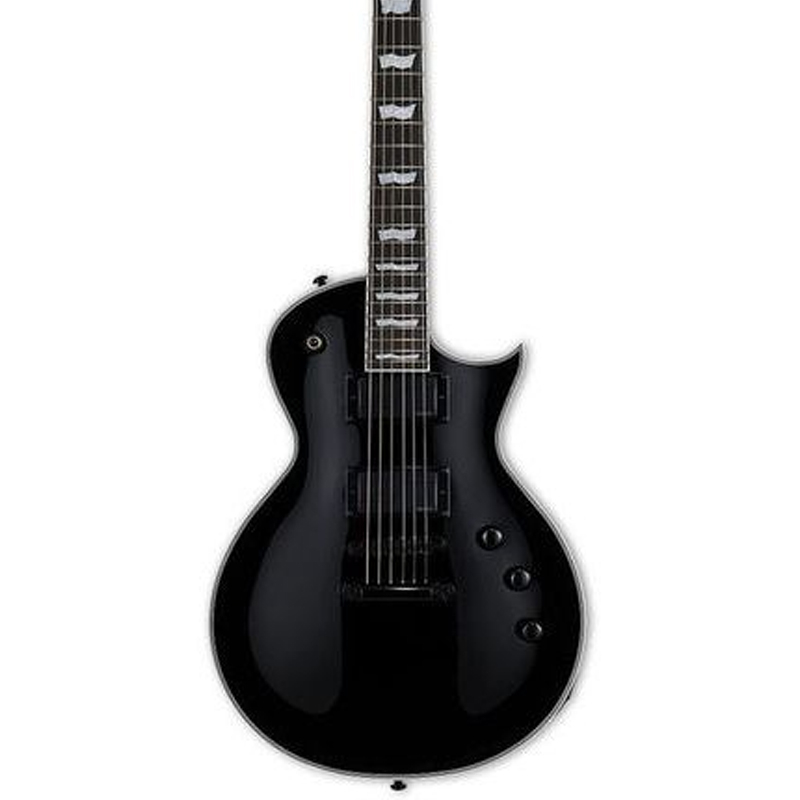
When it comes to the best guitars for metal, our top pick is the ESP LTD EC-1000. This stunning metal axe offers players incredible value for money, with sought-after features and unbeatable playability. Loaded with a set of Fishman’s Modern Fluence humbuckers, there isn't a style of metal this LTD can't perform.
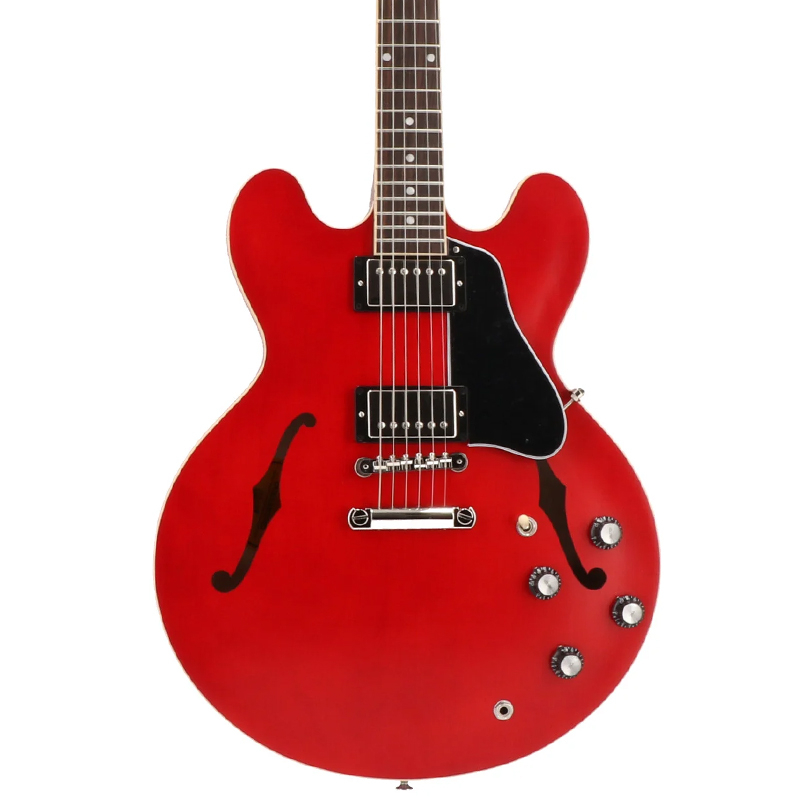
The Gibson ES-335 marries up a range of exceptional tones, with the highest levels of build quality and silky-smooth playability. Gibson has been producing variants of the ES-335 for over 70 years, and that heritage is evident in every note.
Best overall
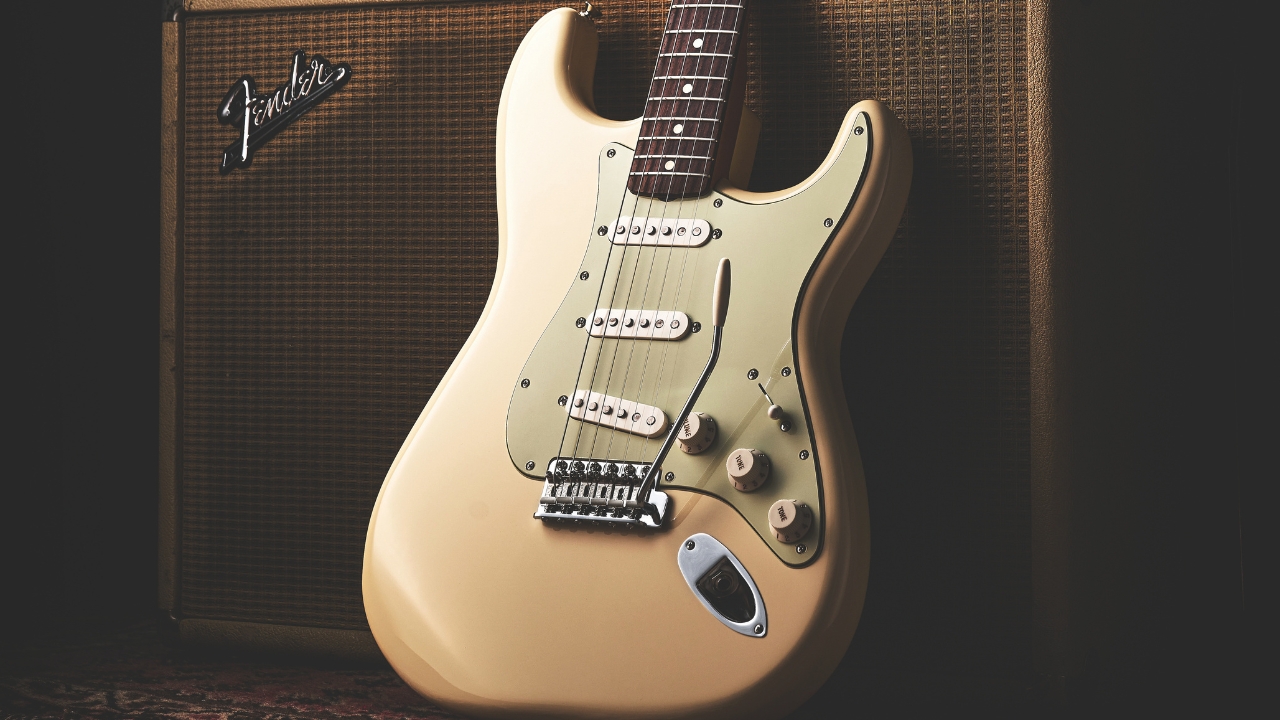
Specifications
Reasons to buy
Reasons to avoid
✅Buy if you want a reliable gigging guitar: With a neck that begs to be played, a versatile set of single-coil pickups, and Fender's famous build quality, this is a reliable gigging companion for sure.
❌Avoid if you want a guitar for heavier tones: While this guitar is tonally versatile, it can't quite handle heavier tones.
Many see the Stratocaster as the ultimate guitar, and well, we're no different. Versatile, accessible, and incredibly playable, there's an argument to be made that the Strat is the best electric guitar of all time, and the Fender Vintera 60s Stratocaster is a prime example of that.
It's a guitar that perfectly evokes the style and sound of an original sixties example without breaking the bank, delivering those classic Strat tones without you having to remortgage or take out a loan to get one.
Featuring the standard formula of an alder body and a maple neck with rosewood fingerboard, an incredibly comfortable early-'60s C neck profile, and a trio of vintage-voiced pickups that will transport you back to the golden age of guitar making, this is an instrument that looks, feels and sounds incredible.

"Plugging in the Strat it’s an instantly familiar and pleasing set of tones we encounter. While all the sounds are bright and sparkly, there’s no hint of the brittle rasp that afflicts some Strats. Through the clean channel with a wash of reverb, every tone is crystal clear and smooth."
Read more: Fender Vintera II 60s Stratocaster review
| Test | Results | Score |
|---|---|---|
| Playability | Excellent neck profile that will suit most players | ★★★★★ |
| Tone | Classic Fender spank with plenty of bite | ★★★★★ |
| Build quality | Very well finished | ★★★★★ |
| Value for money | Great value - you get a lot of guitar for your money | ★★★★★ |
Best for beginners
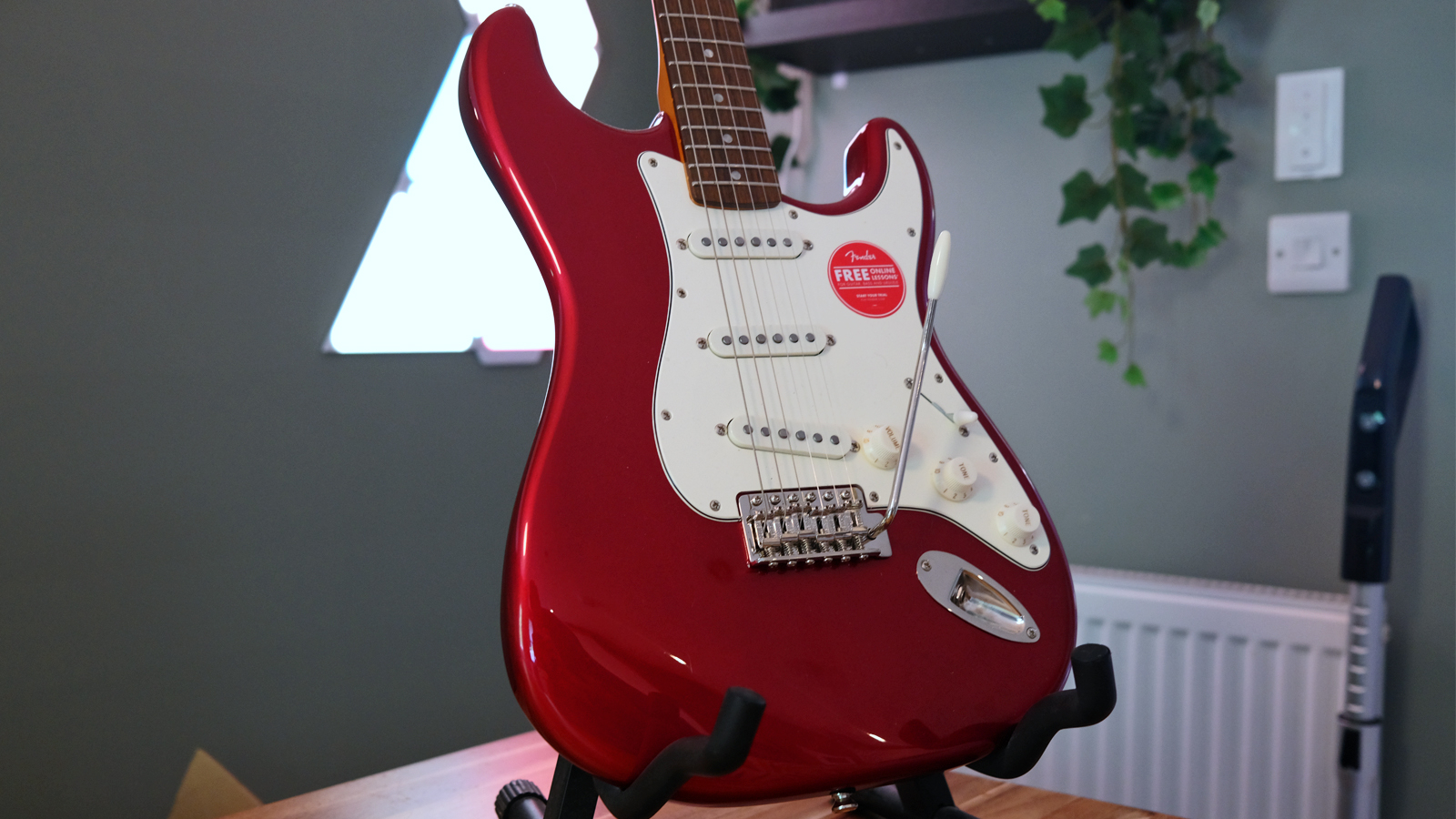
Specifications
Reasons to buy
Reasons to avoid
✅Buy if you want classic tone on a budget: The Classic Vibe series has long been the place to go for vintage tone on a budget.
❌Avoid if you want modern sounds: As the name suggests, the Classic Vibe Strat excels at vintage sounds, but in our opinion, it isn't the best for modern tones.
The entry-level guitar market is in a much healthier place than it was even 10 years ago. Now, manufacturers and brands are employing far higher levels of quality control than they did. This means even 'cheaper' guitars deliver tones, construction and playability previously reserved for mid and higher level models.
The Squier Classic Vibe '60s Stratocaster is the perfect example of this. Previously, an entry-level guitar would tend to last a couple of years, have string action like playing razor wire, and tones like a horde of bees in a tin can. Not so any more.
This Classic Vibe looks, feels and sounds incredible, and even gives some of the cheaper Fender models a run for their money. Style and playability at a price that won't make your eyes water. Progress is a wonderful thing.

"Tonally, I found the CV 60s sits slightly more mellow than the Fender Player Strat, with the neck pickup, in particular, offering a nice balance between the typical Strat chime and something rounder and better suited to blues soloing. There might not be as much warmth or sustain as the more expensive models, but it never felt overly weak or cheap to my ears."
Read more: Squier Classic Vibe 60s Stratocaster review
| Test | Results | Score |
|---|---|---|
| Playability | Comfortable, playable neck profile | ★★★★★ |
| Tone | Fairly authentic Strat tones | ★★★★☆ |
| Build quality | Finished to a decent standard | ★★★★☆ |
| Value for money | Very much worth the price | ★★★★★ |
Best under $1,000
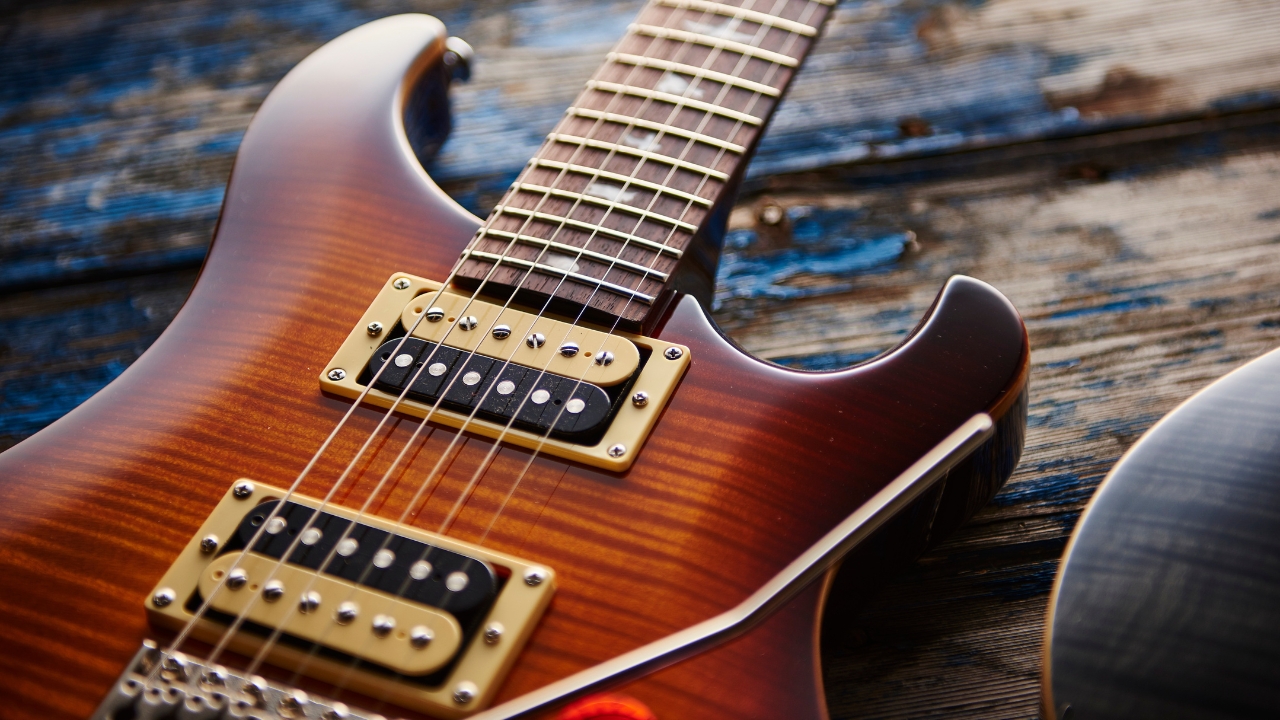
Specifications
Reasons to buy
Reasons to avoid
✅Buy if you need a versatile guitar: The PRS Custom 24 is easily the most versatile guitar on this list. From fierce hard rock tones to delicate cleans, there isn't a sound it can't do.
❌Avoid if you aren't a fan of wider necks: While many find the Wide Thin neck profile comfortable, it certainly isn't for everyone.
To many, the Custom 24 presents the pinnacle of PRS design, and the thing about great guitar design is that it translates well at different price points. The SE Custom 24 is stunning in anyone’s book - and is our pick for the best electric guitar under $1,000.
The Wide Thin neck profile strikes a neat balance between comfort and speed. The flame maple veneer strikes a neat balance between opulence and ostentatious. Everything about this guitar’s design seems to exist in perfect equilibrium.
Other options in the SE Custom 24 line include the eye-popping Burled Ash and big-ticket 35th Anniversary models. Whichever you choose, you’ll be rewarded with a super-stable vibrato, bridge pickup that can handle everything from southern rock snarl to metal chunk, with neck humbucker tones that are inherently suited to blues, rock and showing off your comping skills. The coil-taps open up a whole range of possibilities – country, funk, you name it.
Better yet, you can grab this do-it-all axe for a lot less, with these PRS SE Custom 24 deals.

"This ‘offshore’ model certainly captures the style and taste, and not for the first time the progression in quality and sound of the SE seriously challenges older USA models. The Wide Thin neck is eminently playable, even though its relatively slim depth might put off the big neck brigade. Like the sounds we hear, this guitar covers an awful lot of ground."
Read more: PRS SE Custom 24 review
| Test | Results | Score |
|---|---|---|
| Playability | The Wide Thin neck isn't for everyone | ★★★★☆ |
| Tone | Very versatile | ★★★★★ |
| Build quality | Finished to an excellent standard | ★★★★★ |
| Value for money | Superb value at this price | ★★★★★ |
Best under $500
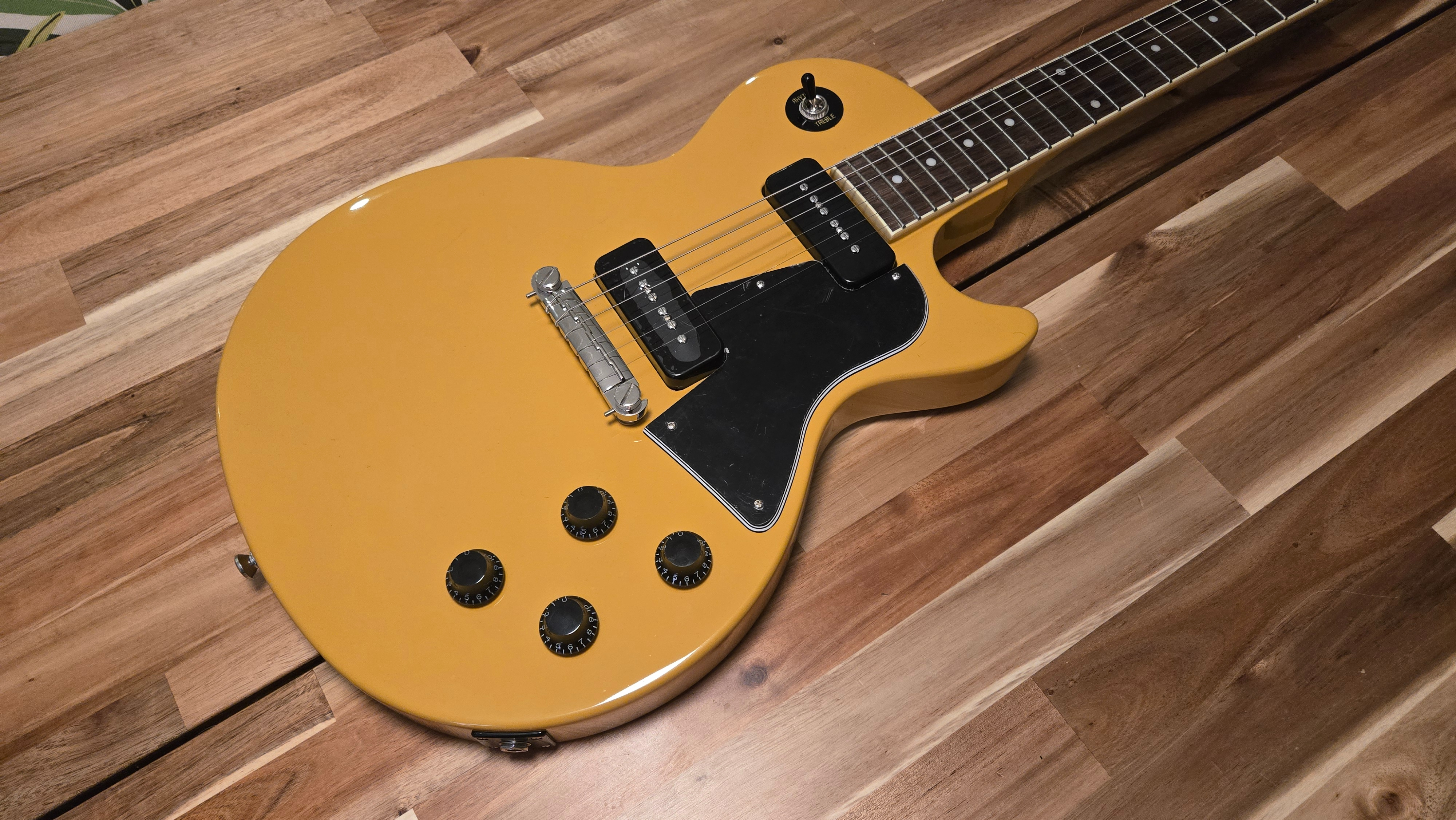
Specifications
Reasons to buy
Reasons to avoid
✅ Buy if you want a guitar for punk: Thanks to its simple design and cutting pickups, the Les Paul Special has long been associated with punk rock.
❌ Avoid if you want a noise-free option: Yes we love P-90 pickups, but they can be pretty noisy. Some players may prefer to go with a humbucker option.
Here at Guitar World, we absolutely adore the sound of a P-90 pickup. There's something about the gritty growl and shimmering highs that sets our hearts racing. So, it's only natural that we'd include a P-90-loaded guitar in our guide to the best electric guitars.
We've chosen to include the stunning Epiphone Les Paul Special, which features the best electric guitar under $500, in the Les Paul category.
Dressed up in the classic Gibson TV Yellow finish and featuring the fat '50s neck profile, this guitar perfectly harkens back to the instruments of yesteryear, delivering exceptional playability, style, and tone, all at a very reasonable price.

"The P-90 pickups were the highlight of this guitar for me, delivering a wide range of tones that were both versatile and characterful. The neck pickup provides a warm, jazzy sound perfect for clean tones and smooth leads. In contrast, the bridge pickup is raw and biting, ideal for cutting through mixes with a bright, aggressive tone. Pair it with a Tube Screamer or other mild overdrive and the results are simply spectacular."
Read more: Epiphone Les Paul Special TV Yellow review
| Test | Results | Score |
|---|---|---|
| Playability | Comfortable '60s neck profile should fit most hands | ★★★★☆ |
| Tone | Not the most versatile | ★★★★☆ |
| Build quality | Finished to a good standard | ★★★★★ |
| Value for money | Well worth the price | ★★★★★ |
Best for metal

Specifications
Reasons to buy
Reasons to avoid
✅ Buy if you want a great value metal guitar: There's a reason you see so many players use the EC1000. The value on offer here is staggering.
❌ Avoid if you want a traditional single cut: This is not a conventional LP-style guitar. So if you are looking for vintage tones, you're best sticking with Epiphone or Gibson.
When it comes to the best guitars for metal, our top pick is the ESP LTD EC-1000. This stunning metal axe offers players incredible value for money with sought-after features and unbeatable playability.
Loaded with a set of Fishman’s Modern Fluence humbuckers, there isn't a style of metal this LTD can't perform. From thrash to doom, death metal to '80s power metal, this affordable offering from ESP can do it all.
We found the thin-U neck to be exceptionally playable, while the extra-jumbo frets and 13.8” radius provided the perfect playing surface for large bends and fast legato licks.

"The hot rod bridge/airy chime neck setting was my favorite, providing a fat, harmonically rich growl at the bridge setting ideal for vicious power chords and vivacious solos, while the “airy chime” neck pickup excelled at rich clean tones with an alluring blend of body and upper midrange cut. The single-coil setting is the real deal, providing bolder, more aggressive single-coil tones than the usual split-coil settings of a full-size humbucker."
Read more: ESP LTD EC-1000 review
| Test | Results | Score |
|---|---|---|
| Playability | The neck may be too thin for some | ★★★★☆ |
| Tone | Not that versatile | ★★★★☆ |
| Build quality | Finished very well | ★★★★★ |
| Value for money | Definitely worth the price | ★★★★★ |
Best for blues
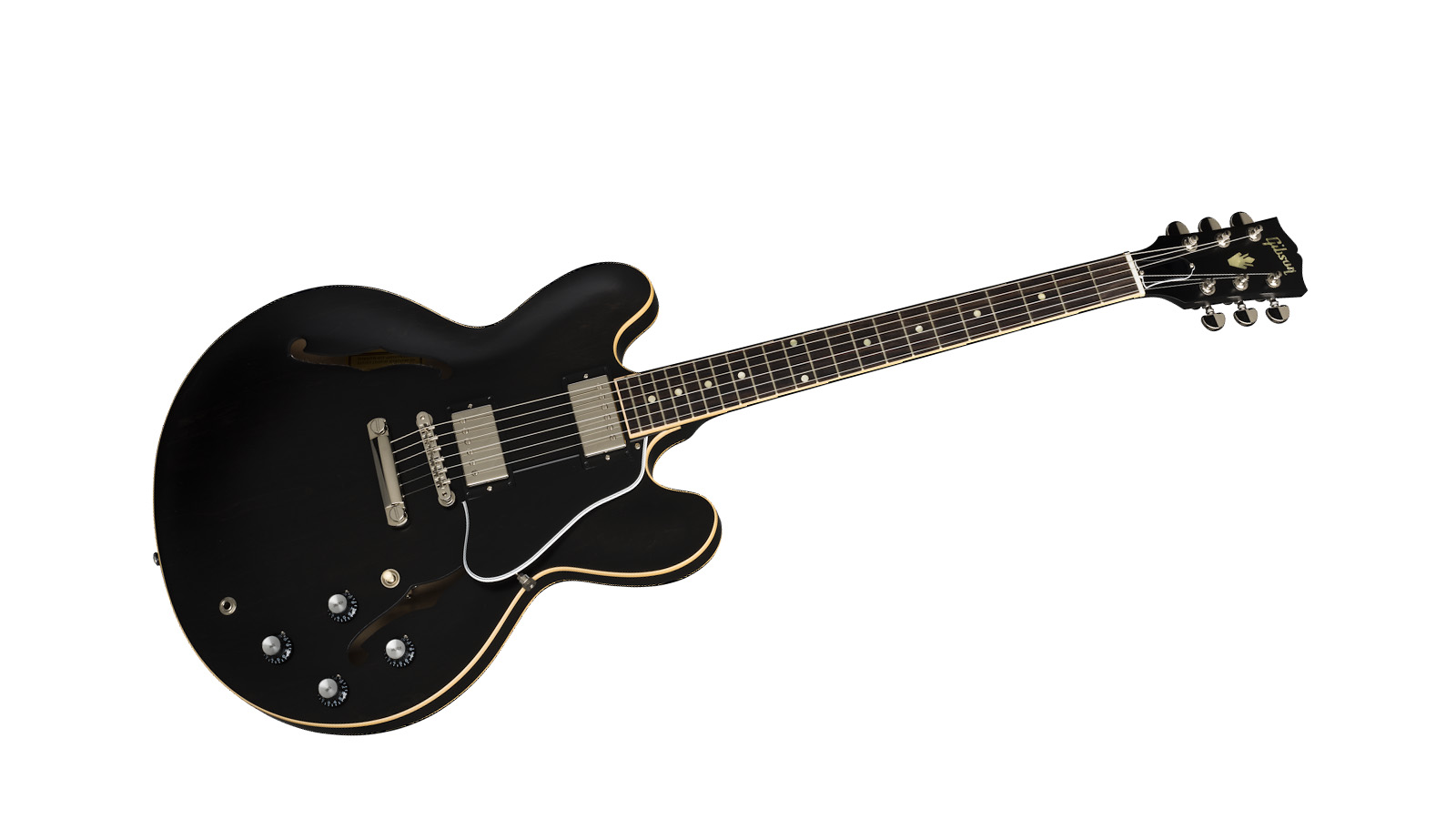
6. Gibson ES-335 Satin
Our expert review:
Specifications
Reasons to buy
Reasons to avoid
✅Buy if you want an iconic guitar: The ES-335 is a classic guitar for a reason. From its bellowing sound and excellent playability, it's one of the best electric guitars ever made.
❌Avoid if you don't like big guitars: The ES-335 is a large guitar and can feel cumbersome to hold for smaller players.
And now for something completely different. When you think about jazz guitars, you think large bodies, semi-hollow construction and warm humbuckers. Combine these things together and you get an instrument capable of producing those silky smooth, rounded tones which form the cornerstone of jazz guitar.
The Gibson ES-335 is a heavyweight in this field. It marries up a range of exceptional tones, with the highest levels of build quality and silky-smooth playability. Gibson has been producing variants of the ES-335 for over 70 years, and that heritage is evident in every note, trill and legato.
It's not cheap, but that tells its own story. Jazz guitars don't get much better than this.
| Test | Results | Score |
|---|---|---|
| Playability | Highly playable, but the body is rather large | ★★★★☆ |
| Tone | Super versatile tonally | ★★★★★ |
| Build quality | Finished very well | ★★★★★ |
| Value for money | It's fairly expensive | ★★★★☆ |
Best for shred
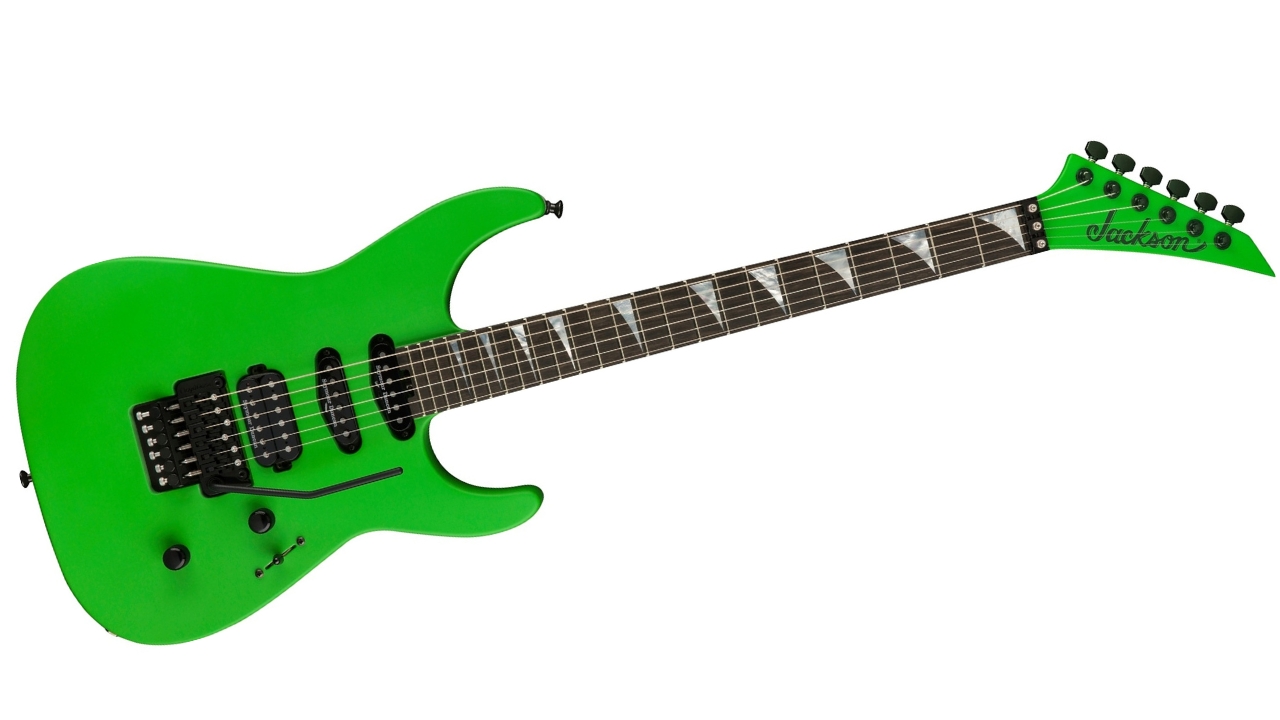
Specifications
Reasons to buy
Reasons to avoid
✅ Buy if you want ultra-fast playability: With its ultra-rigid neck and flat fingerboard profile, the Soloist SL3 is perfect for shred licks.
❌ Avoid if you're on a budget: As this is a USA-made guitar, it isn't the cheapest option. It is worth noting that there are more affordable versions in the Jackson catalog, but you will lose some features.
Not only does the Jackson American Series Soloist SL3 take our top slot for the great shred guitar available today, but it's also one of the best Jackson guitars in the current lineup.
In our glowing 5-star review, we praised this shred-tastic guitar's superb build quality and outstanding playability, saying, "when playing the American Series Soloist, 40 years of guitar-making experience and refinement is evident compared to the original model".
So, if you're in the market for a premium guitar that is specifically designed to shred, then we implore you to seek out this remarkable Jackson model.

"The pickup settings accessed via the blade switch make this Soloist a super Strat with a capital “S”, delivering a satisfying variety of dazzling single-coil tones in addition to the assertive midrange roar of the Duncan JB bridge humbucker. The reverse wound middle pickup eliminates noise when dual single-coil settings are selected, and all of the single-coil settings sound brilliant and sparkling."
Read more: Jackson American Series Soloist SL3 review
| Test | Results | Score |
|---|---|---|
| Playability | Flat fingerboard is ideal for shred, but not much else | ★★★★☆ |
| Tone | Nails high-gain tones | ★★★★★ |
| Build quality | Finished very well | ★★★★★ |
| Value for money | Has a premium price tag, but is worth it | ★★★★☆ |
Best for small hands
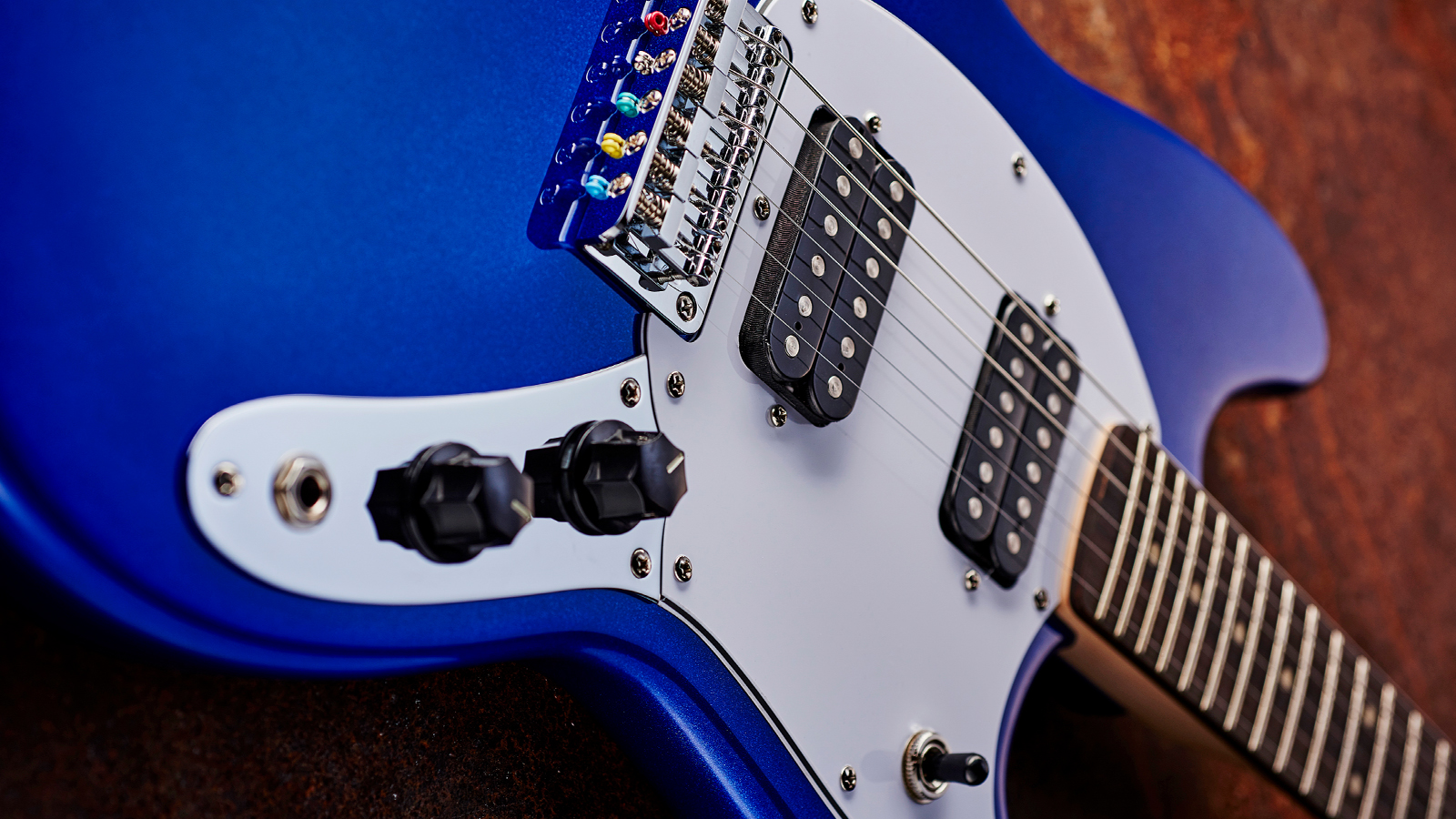
Specifications
Reasons to buy
Reasons to avoid
✅Buy if you are a beginner on a budget: The Squier Bullet Mustang offers superb build quality and playability and is easily one of the best guitars at this price point.
❌Avoid if you aren't a beginner: While this is a great guitar, it may be a basic for intermediate and advanced players.
When choosing an electric guitar for a child, there are a number of things to consider. The guitar itself has to be reasonably light to ensure smaller shoulders can cope. It needs to be easy enough to play for small hands, with an appropriately sized neck. And it needs to look cool. Because, let's face it, at that age the look of the guitar arguably trumps its ability to traverse multiple tonal areas.
There are a few dedicated mini versions of regular guitars, but we've gone for one that is full-sized, fully equipped, and affordable. The Squier Bullet Mustang features a slightly smaller scale length which, combined with the basswood body, makes it easy to get to grips with.
But, importantly, its double humbuckers ensure it can keep up with most grown-up guitars. It is one of the most badass Squier guitars we've played in a long while and easily one of the best beginner electric guitars on the market.

"For the price, the Squier Bullet Mustang is a pretty impressive piece of gear. It sounds, plays, feels, and looks good - everything you need a beginner electric to do. Yes, it definitely feels like a cheap instrument in some areas, but with a target audience of children, beginners, and those on a budget, the good by far outweighs the bad."
Read more: Squier Bullet Mustang review
| Test | Results | Score |
|---|---|---|
| Playability | Slim neck, great for beginners | ★★★★☆ |
| Tone | Not your classic Fender tones, but great for rock | ★★★★☆ |
| Build quality | Finished to a decent standard considering the price | ★★★★☆ |
| Value for money | Great value | ★★★★★ |
Best 7-string
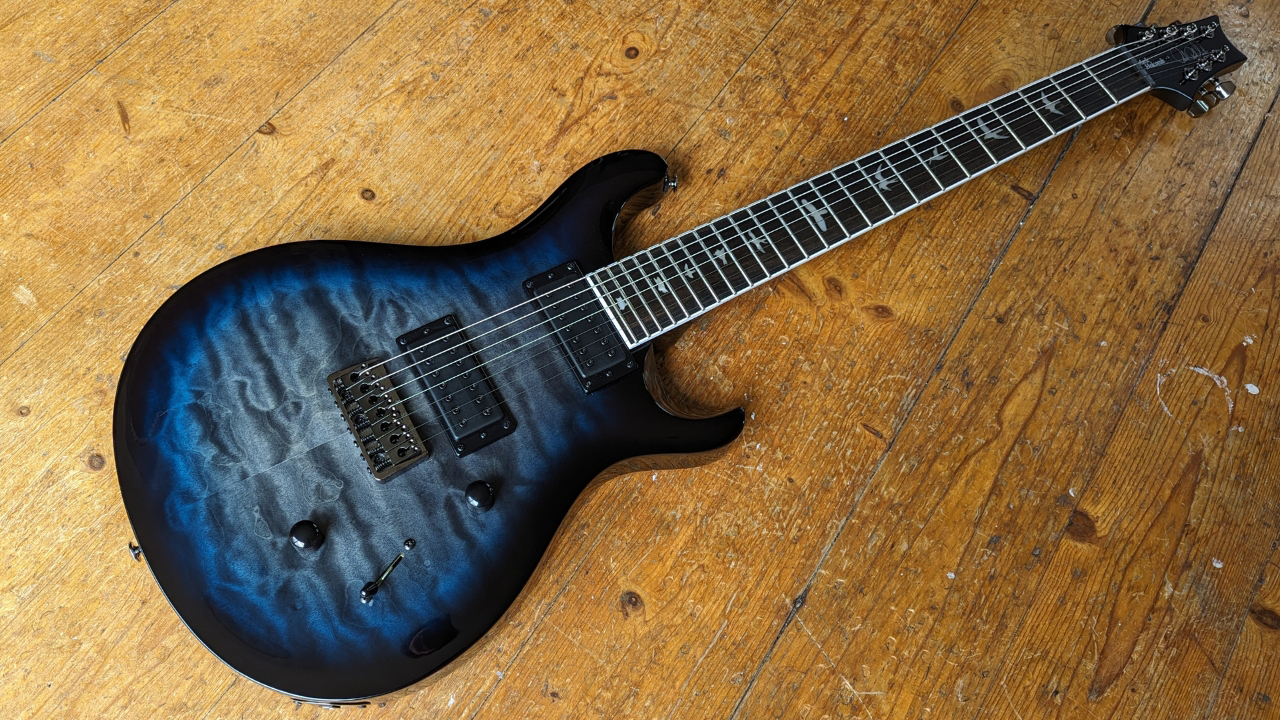
Specifications
Reasons to buy
Reasons to avoid
✅Buy if you want a superb value 7-string: For us, this PRS model offers the most bang for your buck in the 7-string category.
❌Avoid if you want don't play metal: This guitar is unapologetically a metal machine. So, if you aren't seeking a low tuned riffing, this is not the guitar for you.
There are now more 7-string guitars on the market than ever before, and it can get a little confusing to find the right now for you. Our pick for the best 7-string guitar has to be the striking PRS SE Mark Holcomb model.
From its drop-dead gorgeous looks to its impressive Seymour Duncan Alpha and Omega humbuckers and fiercely playable neck, this guitar is simply a joy to play - even if you're not normally a 7-string fan.
So, if you're looking for a relatively affordable way to bring the doom, then we'd look no further than this collaboration between the Periphery axe-man and Paul Reed Smith.

"In the bridge position there’s plenty of aggression, but it’s all delivered with articulation at the forefront. Those rhythmic, open-string djent stabs are my natural first point of call, and chugging that low string is a super satisfying experience. There’s a lovely balance of string tension too which makes bending even on the first fret nice and easy to perform, whilst keeping things stable enough for some Meshuggah-inspired riffing."
Read more: PRS SE Mark Holcomb SVN review
| Test | Results | Score |
|---|---|---|
| Playability | Very playable despite being a 7-string | ★★★★★ |
| Tone | Great for metal, but not much else | ★★★★☆ |
| Build quality | Finished very well | ★★★★★ |
| Value for money | Worth the price | ★★★★★ |
Spec comparison
Here you'll find a comparison of all the key specs from the guitars in this guide. Use it to help narrow down your choice, or just see how a couple of your favorite options compare.
| Model | Body | Neck | Fingerboard | Pickups | Configuration |
|---|---|---|---|---|---|
| Fender Vintera II Strat | Alder | Maple | Rosewood | Vintage-Style '60s | SSS |
| Squier CV '60s Strato | Alder | Maple | Laurel | Custom Alnico V | SSS |
| PRS SE Custom 24 | Mahogany | Mahogany | Rosewood | PRS 85/15 ‘S’ | HH |
| Epiphone LP Special | Mahogany | Maohgany | Laurel | P-90 PRO Soap Bar | SS |
| ESP LTD EC-1000 | Mahogany | Mahogany | Ebony | Fishman Fluence | HH |
| Gibson ES-335 Satin | Maple/Poplar | Mahogany | Rosewood | Memphis Historic Spec | HH |
| Jackson USA Soloist SL3 | Alder | Maple | Ebony | Seymour Duncan | HSS |
| Squier Bullet Mustang | Basswood | Maple | Laurel | Squier Ceramic | HH |
| PRS SE Mark Holcomb SVN | Mahogany | Maple | Ebony | Seymour Duncan | HH |
Also consider
As you can imagine, we review a lot of electric guitars at Guitar World, so it's not possible to include them all in this guide. Below you'll find a few notable models that we recently reviewed, and while we loved them, they didn't quite make the cut.
Reverend Billy Corgan Z-One
Body: Alder | Neck: Roasted maple | Pickups: Railhammer humbuckers
Smashing Pumpkins frontman, Billy Corgan, has been a keen endorsee of Reverend guitars for over six years, and this latest iteration of his signature axe is his third to date – and we think it might be the best.
This stunningly beautiful offset is designed with the Alt rocker's heavier songs in mind, employing a set of newly designed Railhammer Z-One pickups to achieve a mid-focused sound that seriously packs a punch.
★★★★★
Read more: Reverend Billy Corgan Z-One review
Fender American Ultra II Telecaster
Body: Alder | Neck: Maple | Pickups: Ultra II Noiseless Vintage Tel Pickups
A radical revamp of Telecaster playability reaffirms a commitment to classic Tele tones in Fender’s modernized take on the solid-body electric that started it all.
Those Noiseless Vintage pickups give it a high-fidelity, EQ’d quality; the Tele as the best version of itself. It’s a workhorse for the biggest job you’ve got.
★★★★½
Read more: Fender American Ultra II Telecaster review
Fender American Performer Stratocaster
Body: Alder | Neck: Maple | Pickups: Yosemite single-coils/humbucker
For many players, there comes a time when they want to branch out. To try new styles of playing, sounds or genres. And, while it would be nice to have specific guitars for each of these styles, sometimes that isn't possible.
So we look for a jack of all trades. The Fender American Performer Stratocaster is one such guitar.
Offering the dual benefits of classic single-coil Fender attack, with the extra heft of a bridge humbucker, we get a guitar that can handle most styles of music with ease.
★★★★
Read more: Fender American Performer Stratocaster HSS review
Epiphone Les Paul Standard
Body: Mahogany| Neck: Mahogany | Pickups: Alnico classic humbuckers
When we're talking value, one guitar instantly springs to mind. The Epiphone Les Paul Standard has been the go-to guitar for thousands of players over the years, and for good reason. Put simply, this guitar ticks a lot of boxes. We found it to be exceptionally well-made, sounds great and, importantly, it won't break the bank.
For many players, this guitar hits the perfect sweet spot between quality, price and performance. It's why you see so many people graduate to it as their first 'serious' axe, and why you see so many on the weekend warrior circuit. If a bona fide Gibson is out of reach financially, you can't go far wrong with one of these.
★★★★½
Read more: Epiphone Les Paul Standard '50s review
Charvel Pro-Mod DK22 SSS 2PT CM
Body: Alder| Neck: Maple | Pickups: Seymour Duncan Custom Hot Rails/ Flat Strat
The original Superstrat returns and we think it's never looked better. This is one where we are best ignoring the name on the headstock and getting our heads around a guitar that offers lightning-quick playability, heavy-duty humbucker tones, the snap and twang of a Strat, and a boutique feel, all for around a grand.
The stacked bridge ‘bucker is a modern classic that’ll eat up high-gain and squeal when needed, but is also rich in detail. The Strat pickups in the middle and neck positions allow you to sell the illusion that it really does say Fender on that Stratocaster headstock.
★★★★½
Read more: Charvel Pro-Mod DK22 SSS 2PT CM review
FAQs
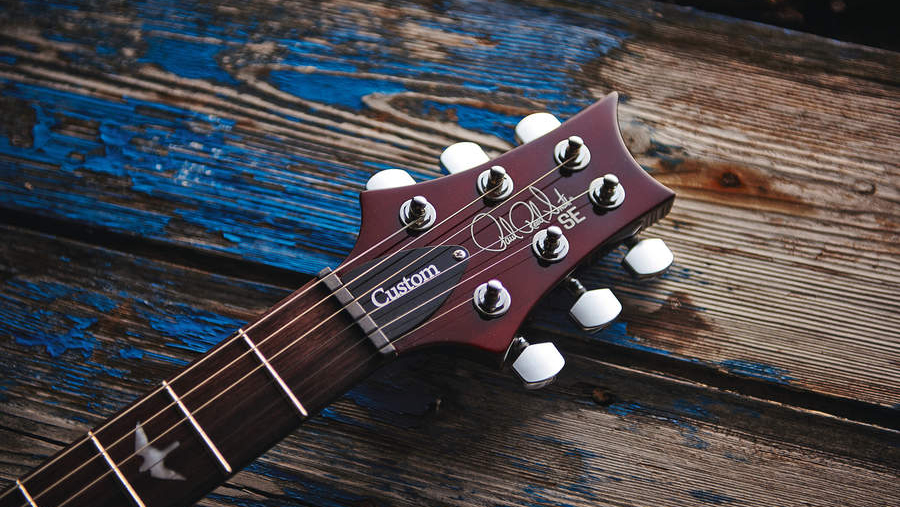
Is electric guitar tone affected by the wood used?
As well as the shape and size of the guitar, weight is largely determined by the wood used. Though often contested, the general consensus is that denser woods tend to yield more sustain. Mahogany, used a lot by Gibson, usually lends a slightly mellower, warmer sound, with beautiful low and mid frequencies.
Fender often use alder as it provides an even frequency response, without it being too light or too heavy, as well as ash, which is usually a little brighter sounding. Something like basswood is quite light and, because it’s easily sourced, is usually cheap and gets used on many budget guitars. Don’t let that put you off though - tone-wise, it’s fairly transparent and evenly balanced.
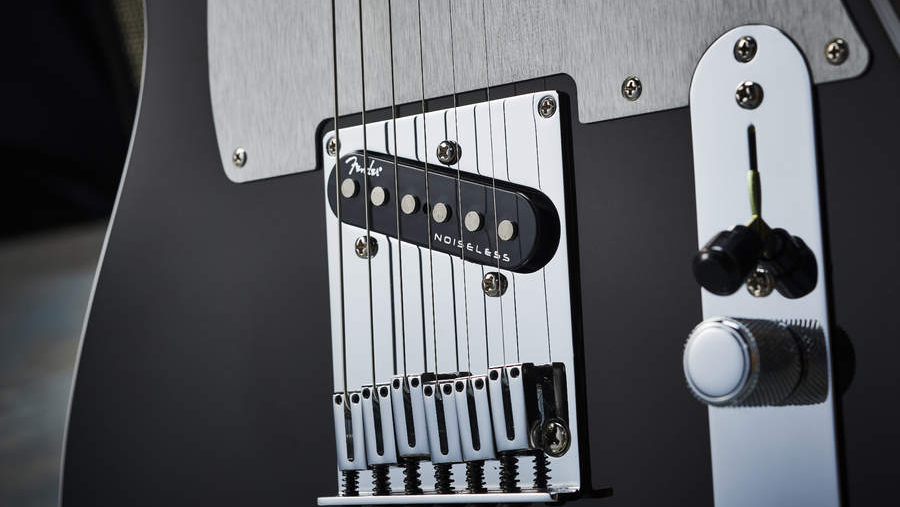
Pickup types
You can trust Guitar World
Pickups play the biggest role in shaping your electric guitar’s sound (alongside you of course!). Pickups are basically magnets housed in a bobbin, wound with wire, that convert the vibrations caused by your moving strings into an electrical signal which is then sent to your amp.
There are many different pickup types out there, but the most popular types are single coils and humbuckers. Single coil pickups are found in a lot of Fender guitars, like the Strat and the Tele and deliver a bright, clear sound, often with a slight scoop in the mids. Strat pickups often sound ‘glassy’ and ‘chimey’, and ‘twang’ is synonymous with the Tele.
Humbuckers tend to sound bigger, beefier and warmer. They fill out slightly more space in a mix and usually give out more output than single coils, making them break up sooner. If you already play a guitar with single-coils, then maybe look for something with humbuckers, or vice versa, so you can cover more ground.
There are guitars out there that feature a mixture of single coils and humbucker pickups, like the HSS Strat, giving you the best of both worlds. There are also coil-tapped or coil-split humbuckers that, when engaged, effectively act as single coils.
Electric guitar hardware
An electric guitar’s hardware can help improve tuning stability, tone and longevity. As you start to spend more, you’ll get things like better quality tuners (sometimes locking tuners), sturdier hardware that fits together better and improves sustain, as well as better and more reliable electronics that keep your signal clearer.
Neck profile
Neck profiles can vary too, and should be considered when looking for the best electric guitar for you. It’s all very much down to personal preference, but neck profiles can range from super thin, like on the Ibanez RG550, to thicker, more vintage-style profiles like on the ES-335. Generally speaking, faster, shreddier players prefer thin necks, and old-school blues and rock players go for either a thick neck or something in the middle.
There is definitely space for a bit of 'gut feeling' when you're shopping. We've all had situations where we've played a guitar we'd never normally have looked twice at and had it pleasantly surprise us. Keeping an open mind is no bad thing. Sometimes when you pick up a guitar you just know. There's no rationale.
But, instinct aside, you can at least put yourself in the right ballpark by using guides like this one to hone in on what works for you. With so many variables, it can be hard to know where to start. Maybe you'll find your dream guitar with a quick scroll, or maybe it will take some further research, but we hope to help you start that journey right here.
How do you look after an electric guitar?
As with any guitar, regular maintenance will help you get the most out of it and mean you won’t be replacing parts - or your entire guitar - prematurely. Restringing every 2-3 months can keep it sounding fresh and lively, plus that gives you a chance to give it a proper clean, to stop dirt building up. Wiping down the strings after use will help too, and given that necks can break easily if dropped or knocked over, investing in a quality guitar stand is a wise purchase.
How we test electric guitars
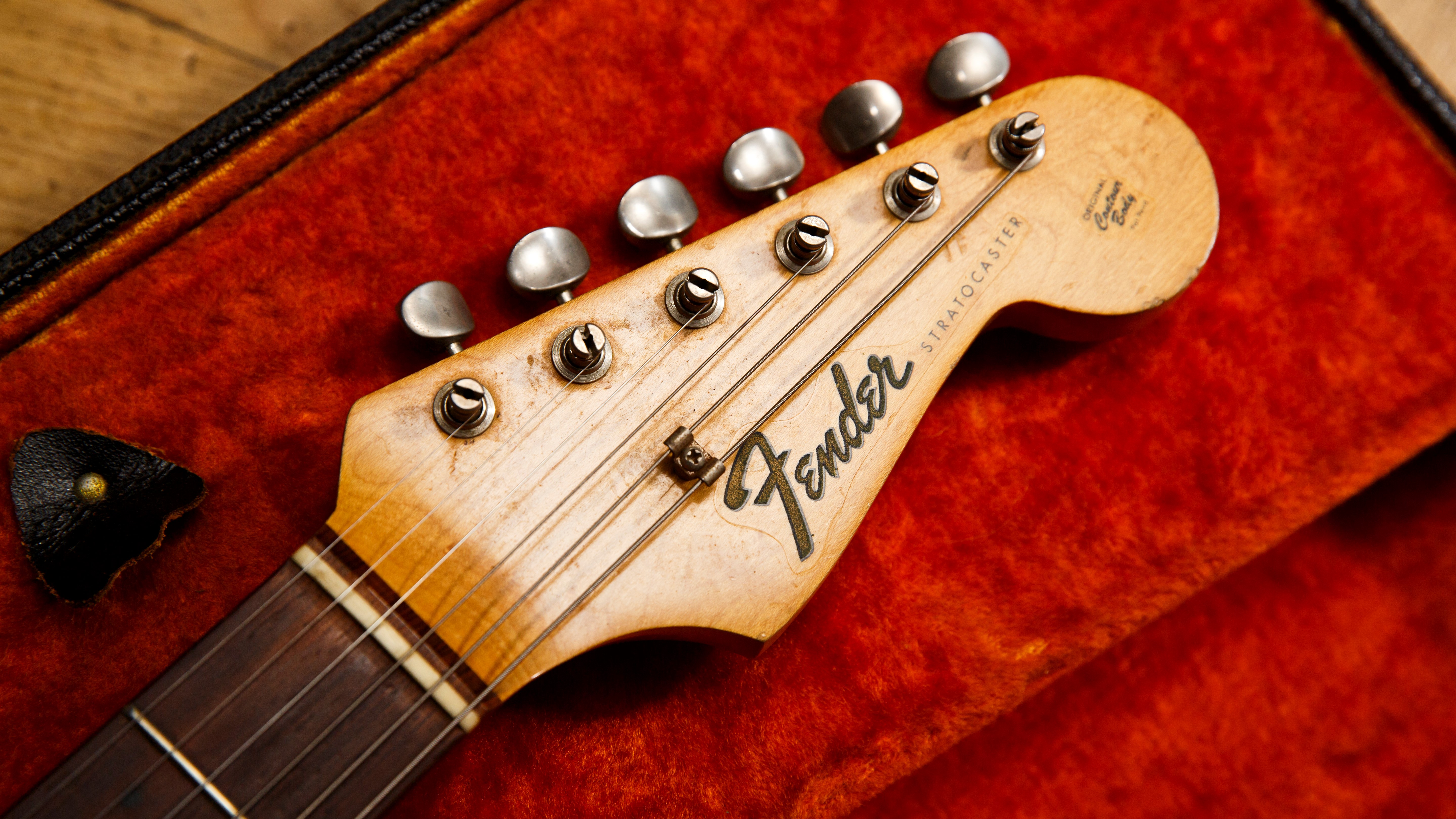
Guitars are very subjective things. What some players may think of as the most incredible guitar ever made, others may completely despise it. That said, no matter our personal preference, there are a few key criteria that a guitar must meet for us to consider recommending it to our readers.
The first is build quality. When testing out a new six-string, we thoroughly check over every aspect of the instrument, making sure everything feels sturdy and solid. If it's a bolt-on construction – like a Strat or Tele – we'll have a close look at the neck join to ensure it's tight, with no gaps. We'll make sure the machine heads are responsive, the volume and tone pots are smooth, and there are no issues with the pickups. We will then look over the general finishing of the guitar. Are there any finishing anomalies to speak of, and is the guitar finished to a reasonable standard for its price point?
Next up is playability. For this, we are looking at how well the guitar plays straight out of the box. We are obviously looking to see how comfortable the neck is to hold, but we are also looking to see if there are any sharp frets, tall frets, or intonation issues, as well as looking to see if the guitar needs an extensive set-up.
Lastly, we need to think about the sound of the instrument. Again, this is very subjective, but we are looking to see if the guitar lives up to the manufacturer's claims and is fit for purpose. For example, if a guitar is designed with heavy metal in mind, does it deliver the bone-crushing tone we'd expect, or does it fall flat? That said, we will test guitars in a variety of different genres just to see what they can do - as you never know, that EMG-loaded Flying V may have a killer blues tone hidden inside.
Read more about how we find the best guitars for our buyer’s guides and exactly how we test each instrument.
Why trust us
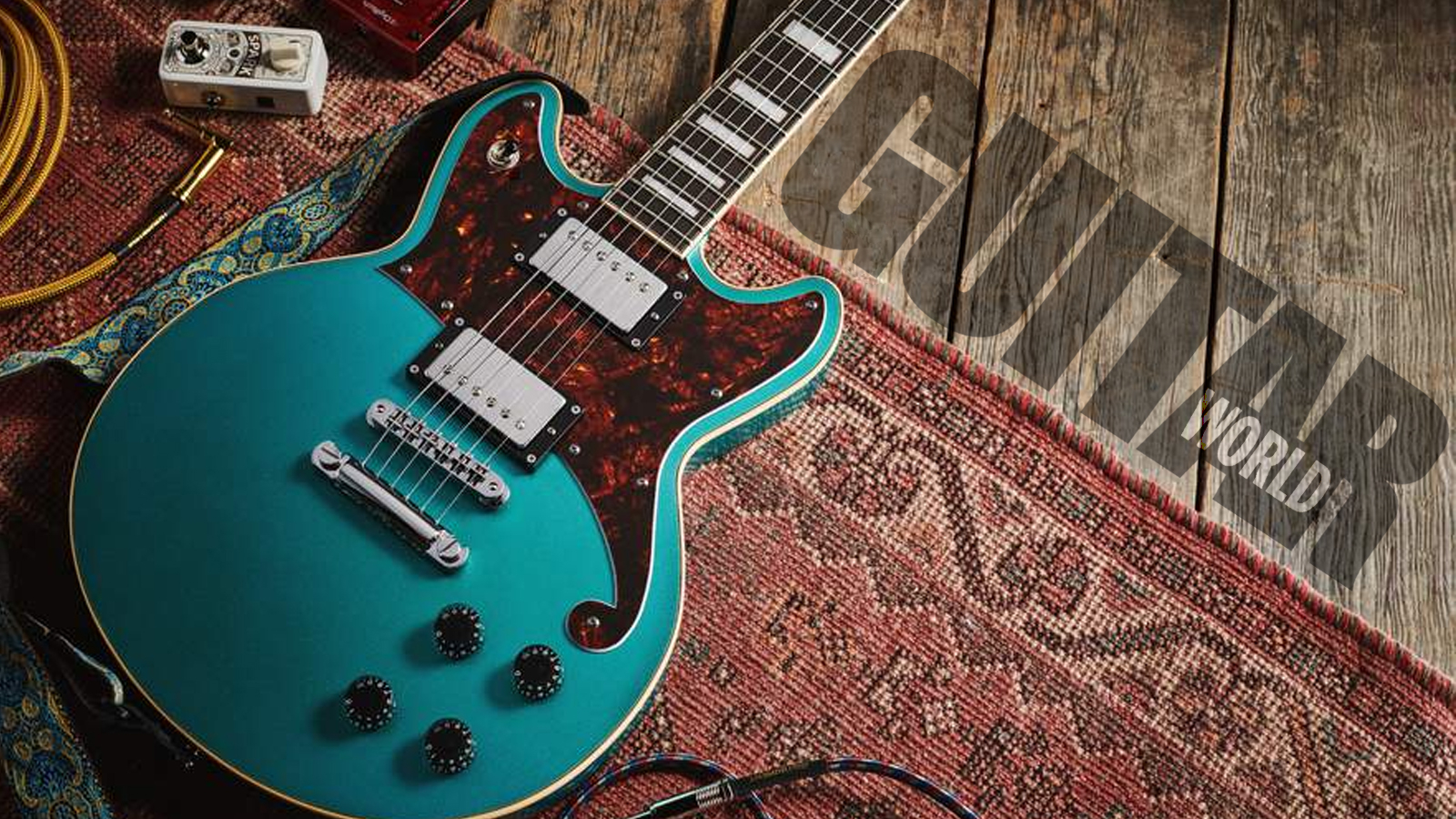
☑️ A global audience of 3.8 million guitarists monthly
☑️ Over 40,000 reviews on GuitarWorld.com
☑️ 30+ years of product testing at Guitar World
Guitar World boasts over 44 years of expertise and stands as the ultimate authority on all things related to guitars. The magazine and website feature expertly written gear round-ups and top-quality, authoritative reviews penned by a team of highly experienced industry professionals.
Guitar World's inaugural print issue hit the shelves in July 1980, and ever since, it has been captivating players and enthusiasts with engaging lessons, insightful interviews with the biggest guitar heroes, and priceless buying advice for newbie players.
Furthermore, GuitarWorld.com continues this legacy online and serves as the hub of the world's foremost authorities on guitar playing. The site not only hosts content from Guitar World but also showcases articles from respected publications such as Guitarist, Total Guitar, Guitar Techniques, and Bass Player. With a reach extending to 3.8 million players each month, GuitarWorld.com is a go-to destination for guitar fanatics globally.
Below you'll find more information on the expert authors of this guide.
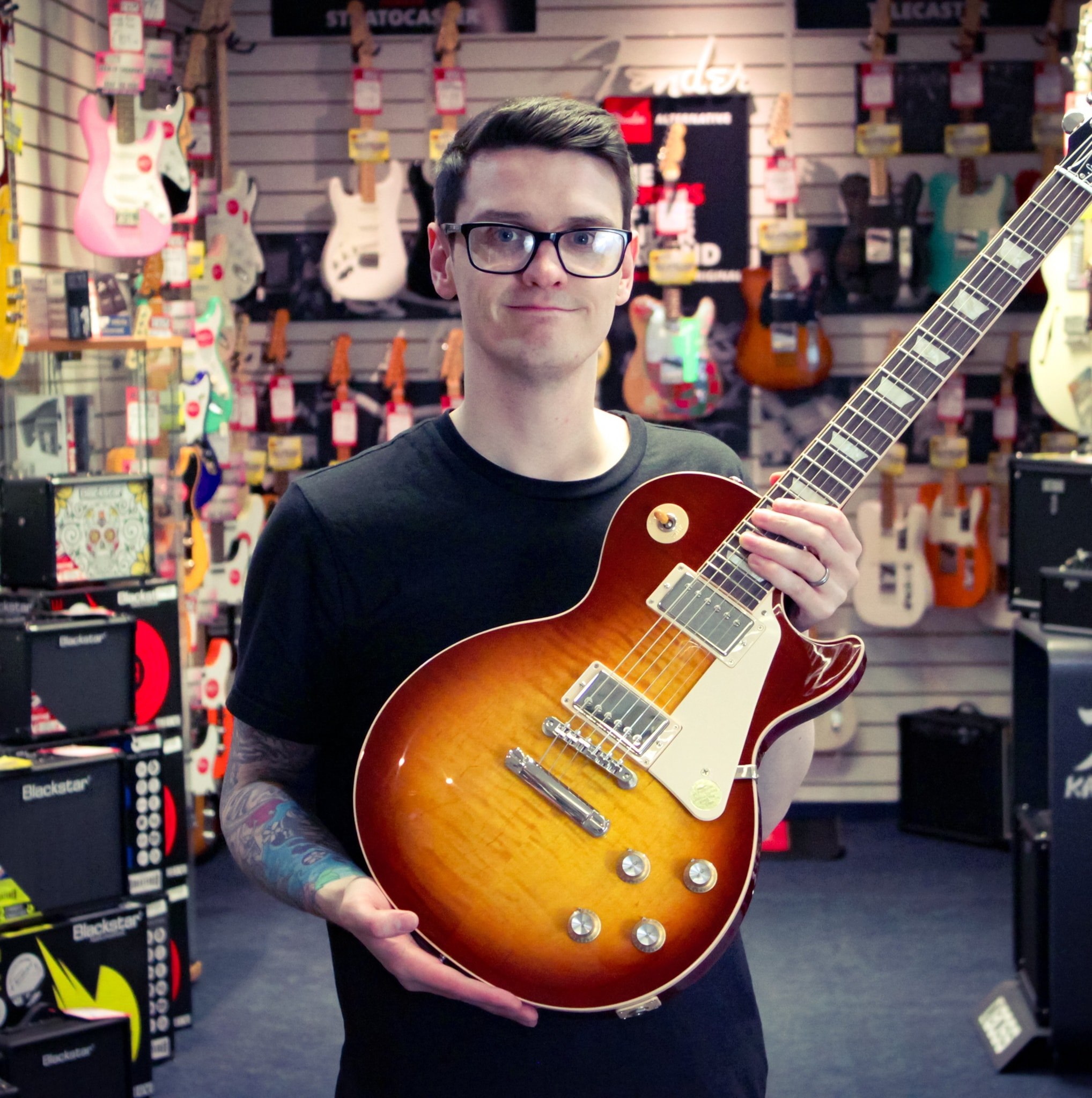
Daryl is a Senior Deals Writer at Guitar World, where he creates and maintains our 200+ buyer's guides, finds the best deals on guitar products, and tests the latest gear. His reviews have been featured in prominent publications like Total Guitar, Future Music magazine, and MusicRadar.com.
During his career, he has been lucky enough to talk to many of his musical heroes, having interviewed Slash and members of The Offspring, Foo Fighters, Sum 41, Thrice, and more. In a past life, Daryl worked in music retail. For a little under a decade, he advised everyone from absolute beginners to seasoned pros on the right gear for their needs.

Matt is a Junior Deals Writer here at Guitar World. He regularly tests and reviews music gear with a focus on guitars, amps, pedals, modelers, and pretty much anything else guitar-related. Responsible for over 60 buying guides, a large part of his role is helping guitarists find the best deals on gear. Matt worked in music retail for 5 years at Dawsons Music and Northwest Guitars and has written for various music sites including MusicRadar, Guitar Player, Guitar.com, Ultimate Guitar, and Thomann’s t.blog.

Chris Corfield is a journalist with over 12 years of experience writing for some of the music world's biggest brands including Orange Amplification, MusicRadar, Guitar World, Total Guitar and Dawsons Music. Chris loves getting nerdy about everything from guitar gear and synths, to microphones and music production hardware.

James is a freelance writer and former Junior Deals Writer at Guitar World. Before writing, James worked as a guitar salesman at a local music store, so he knows a thing or two about matching people with their perfect instruments. James also has experience working in other areas of the music trade, having briefly worked for online music distributor, RouteNote. James is a guitarist, bassist and drummer and has also toured the UK and Europe with his old band Hypophora.
Recent updates
Recent updates
12/12/24: We've changed our top pick to the Fender Vintera II 60s Stratocaster, acknowledging its glowing review. The order of the guide has been rearranged and several categories changed to better meet the needs of a variety of guitar players. We've also added a spec comparison table for an easy side-by-side of the key specs. Finally we've added expert author blocks with links to full reviews for more insight into the instruments.
08/08/24: We have made a few changes to the guide. Most notably, we changed our top pick overall to the fantastic Fender Vintera II '60s Telecaster.
21/02/24: This guide was given a full update with an all-new list of guitars and a few navigational tweaks to make it easier to find the best electric guitar for you.
01/11/23: As well as auditing the products to make sure the list is up to date with the very best electric guitars around, we've also given this page a fresh new look, improving the navigation to make it easier than ever to find the right model for you. Want to get to the good stuff without reading walls of text? Use the "quick list" section to get to know our top choices without any fuss. There are also links to read a more detailed review of each model if you'd like to learn more.
Related buyer's guides
- Play harder with the best rock guitars
- Go down low with the best baritone guitars
- Got the blues? Check out the best blues guitars
- These are the best electric guitars under $1,000
Get The Pick Newsletter
All the latest guitar news, interviews, lessons, reviews, deals and more, direct to your inbox!

Daryl is a Senior Deals Writer at Guitar World, where he creates and maintains our 200+ buyer's guides, finds the best deals on guitar products, and tests the latest gear. His reviews have been featured in prominent publications like Total Guitar, Future Music magazine, and MusicRadar.com.
During his career, he has been lucky enough to talk to many of his musical heroes, having interviewed Slash and members of Sum 41, Foo Fighters, The Offspring, Feeder, Thrice, and more. In a past life, Daryl worked in music retail. For a little under a decade, he advised everyone from absolute beginners to seasoned pros on the right gear for their needs.
Daryl is also a fully qualified sound engineer, holding a first-class Bachelor's degree in Creative Sound Production from the University of Abertay.
- Matt McCrackenJunior Deals Writer
- Chris Corfield
- James Farmer
“It combines unique aesthetics with modern playability and impressive tone, creating a Firebird unlike any I’ve had the pleasure of playing before”: Gibson Firebird Platypus review
“This would make for the perfect first guitar for any style of player whether they’re trying to imitate John Mayer or John Petrucci”: Mooer MSC10 Pro review

